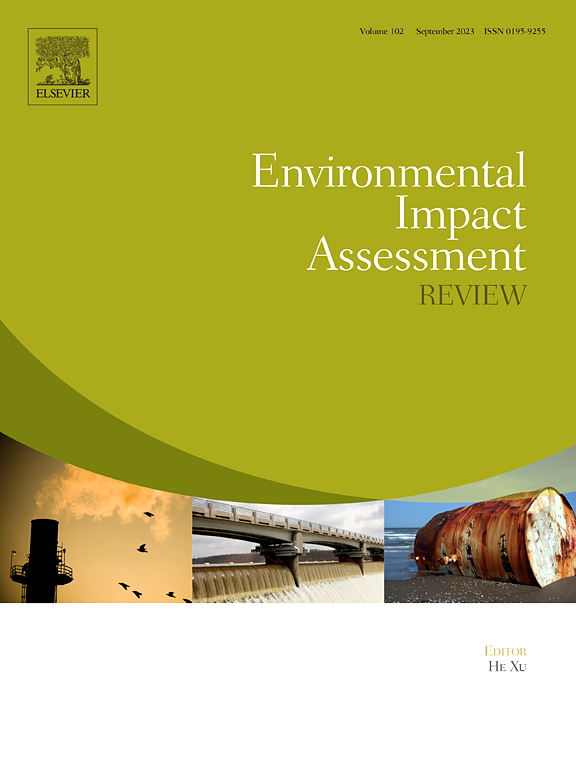Quantifying and revealing cultivated land ecological compensation performance: A machine learning-based approach
IF 11.2
1区 社会学
Q1 ENVIRONMENTAL STUDIES
引用次数: 0
Abstract
Cultivated land ecological compensation enables the rational allocation of ecological resources and promotes the integrated development of the cultivated land system. Evaluating the effectiveness of ecological compensation policies helps reveal the extent of benefits, while identifying influencing factors uncovers critical bottlenecks hindering policy implementation. However, current research primarily focuses on compensation amounts and mechanisms, with few studies on evaluating performance and influencing factors. To fill this gap, this paper introduces an indicator called cultivated land ecological compensation performance, which assesses the specific impacts of cultivated land ecological policies on the ecological, economic, and social systems. The spatiotemporal variations of this indicator across mainland China and its provinces were analyzed, showing an increasing trend on the temporal scale and higher values clustering in the eastern part on the spatial scale. To objectively identify the influencing factors, the XGBoost model, combined with SHAP and PDP methods, was used to explore how univariate and multivariate factors influence this indicator. Through a series of robustness tests, the results confirm the effectiveness of the XGBoost model in identifying the influencing factors. At both the national and regional levels, environmental protection expenditure, GDP, and total machinery power all have a positive impact, and the collaboration between central fiscal support and local economic development is particularly notable. The findings validate the effectiveness of policies aimed at ecological compensation and furnish an empirical foundation for policy optimization.

耕地生态补偿绩效的量化与揭示:基于机器学习的方法
耕地生态补偿有利于生态资源的合理配置,促进耕地系统的一体化发展。评估生态补偿政策的有效性有助于揭示效益的程度,而确定影响因素则揭示阻碍政策实施的关键瓶颈。然而,目前的研究主要集中在薪酬数额和机制方面,很少有关于绩效评估和影响因素的研究。为了填补这一空白,本文引入耕地生态补偿绩效指标,评估耕地生态政策对生态、经济和社会系统的具体影响。分析了该指标在中国大陆及各省区的时空变化特征,在时间尺度上呈上升趋势,在空间尺度上呈东部较高的集聚性。为客观识别影响因素,采用XGBoost模型,结合SHAP和PDP方法,探讨单因素和多因素对该指标的影响。通过一系列稳健性检验,结果证实了XGBoost模型识别影响因素的有效性。在国家和地区层面上,环境保护支出、GDP和机械总功率都有正向影响,中央财政支持与地方经济发展的协同作用尤为显著。研究结果验证了生态补偿政策的有效性,为政策优化提供了实证基础。
本文章由计算机程序翻译,如有差异,请以英文原文为准。
求助全文
约1分钟内获得全文
求助全文
来源期刊

Environmental Impact Assessment Review
ENVIRONMENTAL STUDIES-
CiteScore
12.60
自引率
10.10%
发文量
200
审稿时长
33 days
期刊介绍:
Environmental Impact Assessment Review is an interdisciplinary journal that serves a global audience of practitioners, policymakers, and academics involved in assessing the environmental impact of policies, projects, processes, and products. The journal focuses on innovative theory and practice in environmental impact assessment (EIA). Papers are expected to present innovative ideas, be topical, and coherent. The journal emphasizes concepts, methods, techniques, approaches, and systems related to EIA theory and practice.
 求助内容:
求助内容: 应助结果提醒方式:
应助结果提醒方式:


